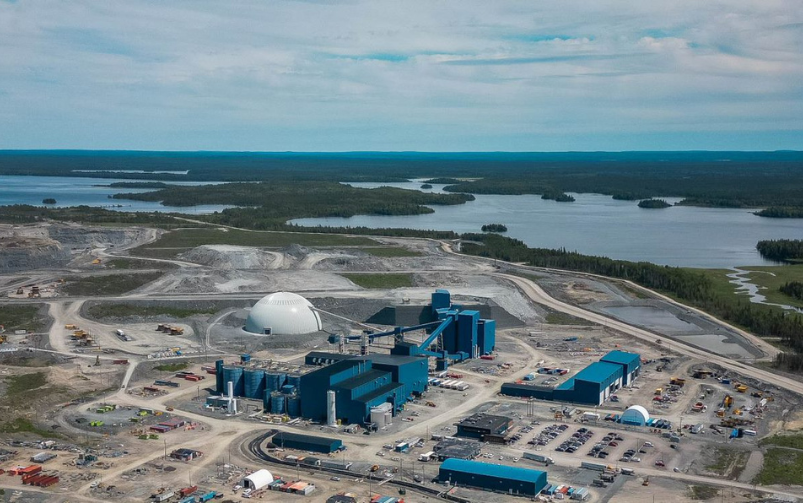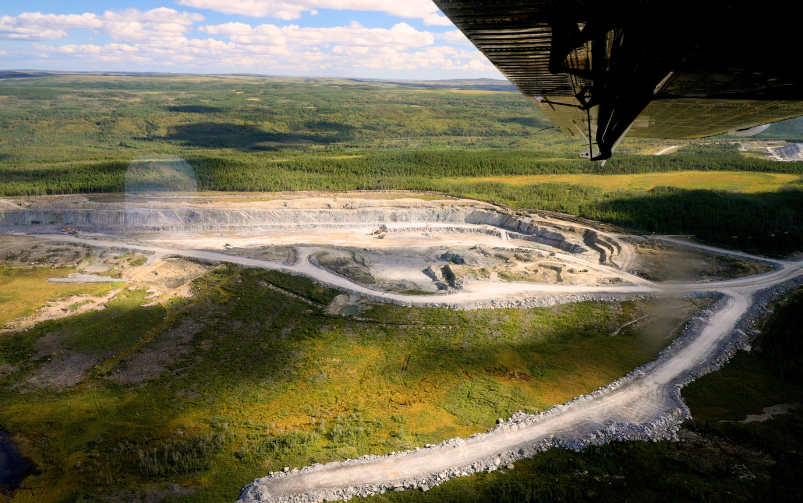Sixth-grade student Nivritti Vikram presenting at CIM Connect on May 15. Photo: Jon Benjamin Photography
The youngest presenter at this year’s CIM Connect was Nivritti Vikram, a sixth-grade student at Rotherglen School in Toronto, who gave a special presentation called “The Power of Sustainability: Responsible Mining and Resource Management (A 12-year old’s views)” at the CEO Lunch on May 13 and at the Delegates’ Lunch on May 15.
“Clearly, I’m neither a CEO, nor a subject matter expert, nor as experienced as you all are in this room,” she told the audience. “However, I hope that you will come to see that what I lack in experience I make up in my passion and aspirations for a bright, positive and sustainable future for my generation and beyond.”
Vikram, whose parents are both engineers, heard about CIM Connect’s call for abstracts and decided to put forward her ideas on responsible mining and resource management. “I personally think that it would be a great opportunity for everyone in this room to understand what is going through the minds of kids like me when we talk about mining,” she explained. “This is important, as my generation are the future miners, process plant operators or even mining CEOs.”
Before preparing her presentation, Vikram surveyed her fellow sixth-graders to see what her generation thinks of the mining industry, and the results were not positive. Her classmates responded that they thought mining is dangerous, dirty and that people work in poor conditions. Their perception is that the mining industry destroys rainforests, emits carbon dioxide, destroys plant and animal life, destroys lands which otherwise could be beneficial for food production or communities, and that it uses up water and leaves people with no drinking water.
“Clearly, my generation has associated mining as an industry that is dirty, irresponsible, water consuming and that generates carbon,” said Vikram. “Simply put, the antichrist of David Attenborough.”
She asked her classmates what they thought our world should look like, and the answer was straightforward—they want a future where we live in harmony with nature.
Vikram noted that her father always tells her that if something was not farmed, then it was mined. “I explained to my friends that all things—from steel, solar panels and even the TV on which we watch David Attenborough—all came from metals from mines, and mines are as important as the food we eat,” she said.
However, Vikram acknowledged that not all mines are equal, and that her fellow sixth-graders do have a point. “If [mining] is not sustainable, then it becomes irrelevant,” she said. “It’s time to listen to the sixth-graders.”
Vikram had several ideas about how the mining industry could meet the expectations of her peers, particularly in terms of land use, biodiversity, water and energy. She thinks in-situ mining needs to become more mainstream to reduce mine waste, and that selective mining could be an option where in-situ mining is not possible. “It might be easier to bring tonnes of rock out of the hopes of getting a few grams of gold out,” she said. “However, it makes very little sense for sustainability.”
She also pointed to several sustainable technologies in the mining industry, including battery-electric vehicles, Anglo American’s hydrogen-powered haul trucks, Epiroc and BluVein’s slotted e-rail system, gravity-based energy storage and small modular reactors for power generation.
“All of these technologies and innovations already exist, so what is the issue?” Vikram asked. “I think it’s all to do with industry. Governments, investors and communities all have different and sometimes mutually exclusive expectations.
“The only way I can see mining becoming relevant is when all of these stakeholders come together as one.”




